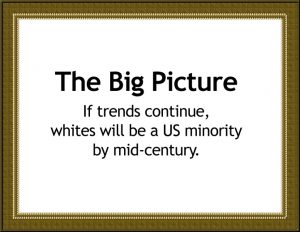Race
Questions & Answers • Tools
Overview: Few subjects in America are more complex than the question of race. Biologists now agree that there is nothing in a person’s genetic makeup that supports the idea of race.
Still, most people believe there are inherent “racial differences,” especially between people with light tan skin and those with darker brown skin.
The persistence of this idea—that your skin color is important to who you are—is embedded in our culture, affecting every aspect of it. Race may not exist, but racism still does, and its effects are evident in the way people of color are treated differently and respond differently, within our health care system and within the larger society.
Tips on providing equitable treatment for patients of all races
- Do different groups of people really have different health outcomes?
- Is collecting information about a patient against the law?
- How do I overcome patient and staff reluctance to talk about race?
Q. Do different groups of people really have different health outcomes?
A. Yes. Even though there is no essential biological difference between people of one race or another, the rate of disease — and mortality from specific diseases — varies tremendously between people identified as one race or another. For example,
- The mortality rate for cardiovascular disease among African American women is 67 percent higher than for white women.
- Mexican American adults are almost twice as likely to have diabetes as non-Latino whites of the same age.
- Asian Indians, Chinese and Japanese people living in the US have lower death rates for stroke than the white population. But Samoans in the US die of stroke at almost five times the rate of whites.
The medical literature proves that different racial and ethnic groups have different health outcomes. Teasing out the reasons, and establishing can be done about them about them, is more complex.
Q. Is collecting information about a patient against the law?
 A. No, Collection and reporting of data on race, ethnicity and primary language are legal, according to Title VI of the federal Civil Rights Act of 1964. No federal statutes prohibit this collection. At the state level, Minnesota law does not prohibit collection of this information, either.
A. No, Collection and reporting of data on race, ethnicity and primary language are legal, according to Title VI of the federal Civil Rights Act of 1964. No federal statutes prohibit this collection. At the state level, Minnesota law does not prohibit collection of this information, either.
Q. How do I overcome patient and staff reluctance to talk about race?
A. Collecting information about sensitive topics should be done… sensitively. There are ways to ask patients about race, ethnicity and language that reassure patients about our intentions. When collecting this data, always
- Assure the patient that the data will be kept confidential, and that it will never be used to deny them care.
- Explain why the data is being gathered. A simple explanation like “We need to know this so we can improve services for all of our patients,” may suffice, but if someone really wants to know, you can talk about your organization’s commitment to reducing health care disparities for minority patients.
Tools:
Key publications, websites and organizations on race and health
National resources
New Guide for Hospital Leaders on Inequities in Health Care A report, Improving Quality and Achieving Equity: A Guide for Hospital Leaders, presents the evidence for racial and ethnic disparities in health care, and provides the rationale for addressing them with a focus on quality, cost, risk management and accreditation. It also highlights case studies and model practices, and recommends activities and resources that can help hospital leaders addressing health care disparities.
Minnesota connections
Minnesota Department of Health, Office of Minority and Multicultural Health
Administers an Eliminating Health Disparities grant program, funding community initiatives for American Indians, Africans/African Americans, Asians, and Latinos in eight health disparity areas.
Populations of Health Status Reports: Demographic and economic profiles, birth related health indicators, mortality rates and cause of death, illness and injury, and access to health care.
